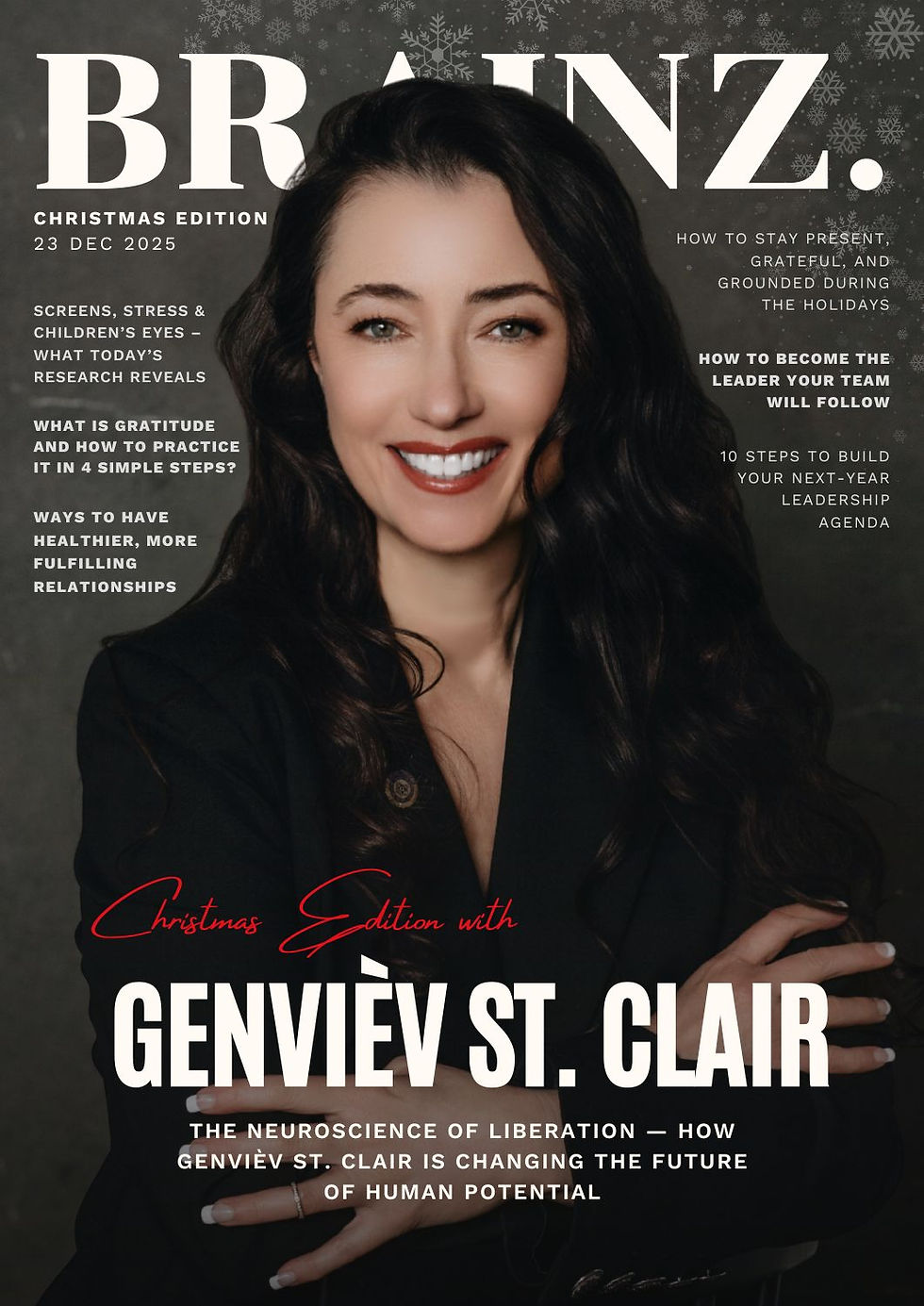Why Worldviews Are More Important Than Demographics
- Brainz Magazine

- Nov 30, 2021
- 6 min read
Written by: Mike Garner, Executive Contributor
Executive Contributors at Brainz Magazine are handpicked and invited to contribute because of their knowledge and valuable insight within their area of expertise.

Going by what they teach in traditional demographics school, Prince Charles and Ozzy Osbourne would be in the same customer segments.
After all, they're the same age, they are both wealthy and have all the trappings that come with that status and they're both (kind of) princes, one’s a Prince of the Realm and the other is the Prince of Darkness.

But that's about all that unites them. Go figure.
I'm struggling to think of anything you could sell that they would both be likely to buy. Toothpaste? Perhaps not; legend has it that Charlie boy has a lackey to serve him toothpaste.
Nope, drawn a blank.
This just underlines the idea that you need to be VERY cautious if you want to rely on demographics when you're working out who you want to sell to.
Demographics play an important role in the building of customer personas. You don’t sell clothes to teenagers the same way you'd sell them to 65-year-olds.
But it's easy to get bogged down in the minor details of your avatar’s life, if you sell industrial machinery, marketing automation or printer cartridges, your or your children's hobbies are not relevant.
Humans are wired to want to be like other humans, they like to do the same things as their peers, they don't like to be out on their own; they don’t like to be different. They gather in tribes. Otherwise, the sabre-tooth tiger gets them.
That's the entire basis of our fear of exclusion. So we like the same films, the same music or read the same books. We believe the same things about ourselves and the world or we have the same habits.
People may often be different. They lead different lives and experience different things, but they coalesce around core beliefs and feelings, activities or habits.
Our shared experiences are the centre of psychographics. We identify the tribes of people that think alike sufficiently to form a cohort that can be targeted and form the basis of our ideal client avatars.
We can’t create personalised messages for everyone in any audience, so for marketing, we have to make assertions and assumptions and group them together according to the psychographic category. What they feel and believe.
We group people by worldview. That means basic assumptions that people have about the world and enables us to create messages that resonate with sufficient people.
Here are a couple of examples.
I was speaking to someone recently in upstate New York from my office in Somerset in South-West England. She's 23 and barely out of college. In fact, she's preparing for a Masters' and perhaps a doctorate in social work. She majored in English and Music and spent some time singing opera. After we’d finished with the subject of our call, we went down a music rabbit hole populated by Bach, Mozart and how Stravinsky invented heavy metal. We also spoke about modern composers she didn't know, like Steve Reich and Philip Glass. Only my need for dinner and her need for lunch interrupted us.
Nothing unites us demographically, but we can talk about classical music and other forms and literature forever.
A lot of my friends 30 or 40-somethings with whom I share values and political and philosophical views. We buy the same things. We read the same books and go to the same places.
I’ve spent a lot of time in face to face and more recently online networking groups over the years. I’ve met some of my best friends in networking groups - some of those 30 and 40somethings, as it happens. I’ve also met people I could take or leave and a handful I’ve actively disliked.
We got up and went to events, sometimes far too early in the morning, because a common cause joined us. We were looking to help each other in any way we could by passing leads and referrals to help our businesses grow.
We were a diverse bunch ranging from 20somethings to 70somethings with, let’s say, differing views if the discussions on online forums were anything to go by, but it worked. We were are a community with a common goal.
Many of the values of My (baby boomer) Generation are the antithesis of the things I do and believe. They’re all afraid the world isn’t what it used to be and they spend their time wailing and moaning about how the world is going to hell in a hand cart and things were better in their day. Just like their parents did in the 60s, 70s and 80s and every generation before them. They have become their parents. Grumpy old white men, the lot of them.
I’m aware the world changes from one generation to the next and, quite frankly, I’m excited by the way things are (finally) changing.
Whereas I may share demographic features with them, I share very few psychographics with them. We agree on little; we don’t do the same things and we don’t share the same values. Apart from music, that is.
So what actually is psychographics? The dry (Oxford) dictionary definition is “the study and classification of people according to their attitudes, aspirations, and other psychological criteria, especially in market research”.
And there are many more boring definitions where that one came from.
But I prefer to say that psychographics is where you get into your customer’s head. They are a way to tell your customers’ story. And this is where it gets powerful.
You do that by listening and talking to them. You won’t always have the time or money resources required to do some of the deep level thinking of larger organisations so you are going to have to rely on your industry knowledge and to some extent guesswork to get you through. But that’s fine, you’ll adjust as you go along.
You can't write individual copy for individual readers, so you have to generalise and miss certain aspects. The aim will be to create archetypes that don't descend into the excesses and shortcuts of stereotypes.
Do you imagine you’ll be selling to people with perfect lives? Of course not.
The stories you tell about your ideal client will help you identify them and help them identify with you. People are conflicted, complicated and contradictory. Ideal clients do not lead ideal lives.
We’re celebrating the wonderful messiness of life here. It’s by filling the cracks in those perfect lives that will enable you to develop relationships with your ideal client.
The way into their heads is by telling them stories in which they recognise themselves. It’s the old copywriter trick of getting them to nod their heads as they read your copy or your stories.
You can be a voyeur, the more you imagine your target, the more cracks you’ll uncover. The key to building relationships with prospects and turning them into customers is empathy.
There will be points where your customer’s or your prospect’s story meets yours - like on a Venn diagram. That’s the shared experience they will recognise and where you can help them.
Demographics will give you a basic structure of who you are targeting but they won't tell you anything about what your prospects feel.
Societies first came together and grew on the basis of human connection. Firstly, for practical reasons, it was easier to hunt and gather and later start growing things in numbers than individually.
Then, as settlements grew into villages, towns, and then cities, groups of people had shared experiences and beliefs. That was either grandiose causes like religions or corporations of professions in the Middle Ages for example to smaller interest groups around sometimes quite esoteric things.
This has continued to the present day with things like book clubs, sports clubs or watchers of TV programs.
These are random examples and you could find hundreds of others in your experience.
I find myself in lots of different interest groups and my psychographic is my own.
I'm surrounded in my office by books, music and old maps of the London Underground and the Paris Metro. I have specific views of the world that, as I said, are often very different from other members of my demographic cohort.
But, I identify with sufficient numbers of other people to be part of a group.
Looking for meaning and identity is part of the human experience. Early civilisations came together in communities based on common interests and spiritual beliefs. Now we do things together for any number of reasons, literary festivals, music festivals, games of football. We join together because we believe the same things.
What you identify with or believe in generally says things about you, your habits and your values. Whatever they are. If you’re a tree-hugging vegan, a flat-earther, a moon landing denier or an Arsenal supporter. You’ll have found your tribe.
And marketing to you will be made easier by the values you share with your cohort. Because marketers will be able to identify what you care about and talk to you about it.
That’s how psychographics work.

Mike Garner, Executive Contributor Brainz Magazine
Mike’s been a copywriter and French translator for almost 25 years, working with clients large and small.
He spent half his adult life in France and went native. You could say he’s spent an entire lifetime seeing things through other people’s eyes.
He’s learnt that stories told with impact and empathy are the key to effective marketing in the twenty-first century. Are you ready to tell yours?










.jpg)